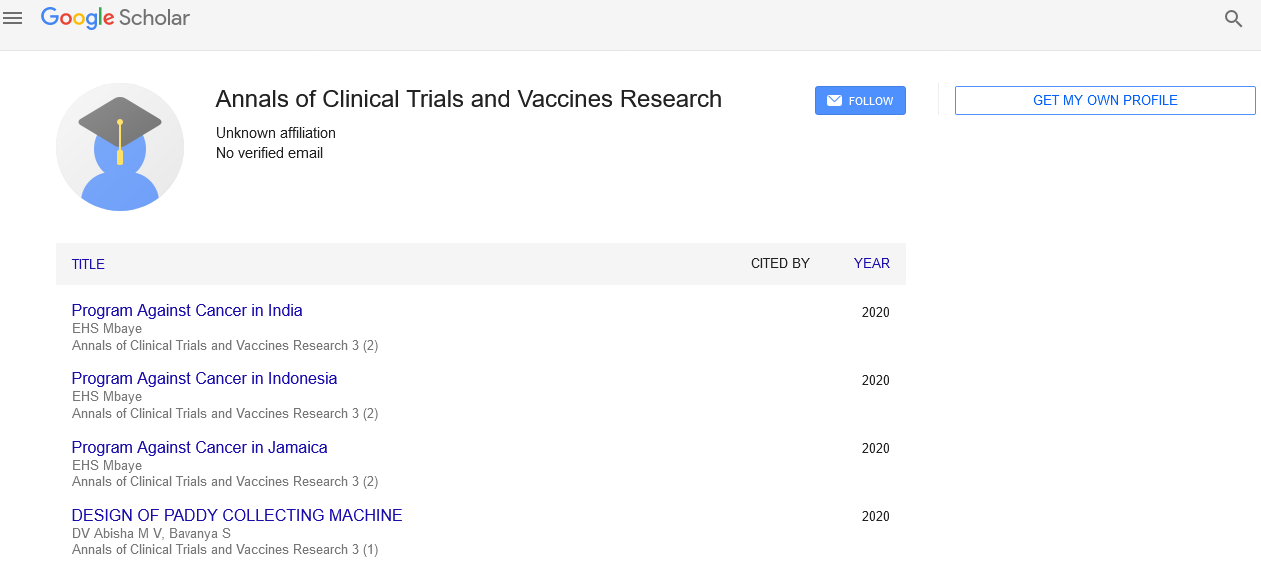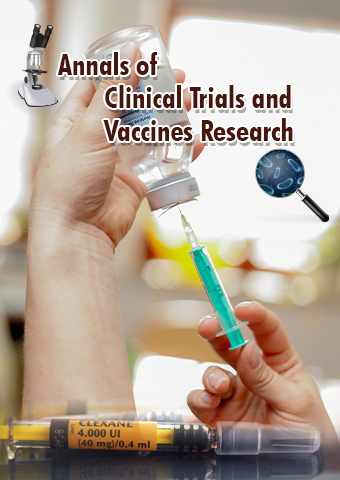Mini Review - Annals of Clinical Trials and Vaccines Research (2022) Volume 12, Issue 3
Alive attenuated vaccine development against the African swine fever virus
Roney Leacok *
Palmetto Health-USC Medical Group, Colombia
Palmetto Health-USC Medical Group, Colombia
E-mail: l.roney54@gmail.com
Received: 01-Jun-2022, Manuscript No. ACTVR-22-70497; Editor assigned: 03-Jun-2022, PreQC No. ACTVR-22-70497 (PQ); Reviewed: 17- Jun-2022, QC No. ACTVR-22-70497; Revised: 22-Jun-2022, Manuscript No. ACTVR-22-70497(R); Published: 29-Jun-2022, DOI: 10.37532/ actvr.2022.12(3).60-62
Abstract
African swine fever (ASF) is an acute hemorrhagic disease that kills close to 90% of its victims and is brought on by domestic swine and wild boar becoming infected with the ASFV. ASFV has been spreading throughout the world and poses a serious danger to the swine industry’s financial stability. There isn’t a highly effective medication or vaccine for this illness. Pigs may contract attenuated ASFV isolates through chronic infection, but the infection will not be fatal, suggesting that pigs may be able to develop a defence against resistant ASFV. Insights into the biology of ASFV have been provided by studying the essential pillars of immunity development and virus clearing, which keep the host’s normal cell functions and animal life depending on virus-host interactions, in-tact. Regarding the complex interaction between the ASFV protein and host, this review is divided into sections based on broad themes including natural immunity, endoplasmic reticulum stress, cell death, ubiquitination, and autophagy. Insights into the initial virus sensing, clearance, and cell homeostasis can be gained by elucidating the multifunctional role of ASFV proteins in virus-host interactions. This information will also help in the study of viral pathogenesis and the creation of new antiviral therapies. Due to the lack of a vaccine or efficient therapy, African swine fever (ASF) is one of the most severe hemorrhagic infectious diseases that affect pigs and wild suids. Up to 167 ORFs in the vast dsDNA genome of the African swine fever virus (ASFV) are anticipated to encode proteins. This genome has sparked the interest of scholars all over the world since it was first made available to China in 2018. Here, we examine the latest development in ASFV research. Given the significance of this condition, this review will focus on recent advances in basic virology, with a particular emphasis on epidemiology, virulence, pathogenic mechanisms, diagnosis, vaccine development, and treatment. This will aid in our comprehension of virus-host interactions and disease prevention with regard to ASFV.
Keywords
ASFVE • epidemiology • Diagnosis • Vaccines • Control • African • swine fever • Cell homeostasis • Virus-host interactions • Antiviral
Abbreviations: ASFV: African swine fever virus • ASF: African swine fever • dsDNA: Double strand DNA • VDPV: Vaccine-derived Poliovirus
Introduction
Depending on intricate interactions involving both viral and host factors, the outcome of an infection with the African swine fever virus varies greatly. There aren’t many clinical symptoms when the natural reservoir hosts, like as warthogs and bush pigs in East Africa, are infected, yet animals can carry the virus for a long time [1]. This demonstrates a longterm adaptation to keep a virus reservoir alive without eradicating the infection or the host. Ornithodoros moubata, a kind of soft tick that lives in the burrows of warthogs, serves as the virus’s biological vector and reservoir, and it is essential to maintaining infection in this transmission cycle. Contrarily, infection of domestic pigs or wild boars with comparable ASFV strains causes an acute hemorrhagic fever with a very high case fatality rate [2]. Although the majority of ASFV isolates in domestic pigs result in this acute form of disease, some less virulent isolates have emerged and these can induce a sub-acute type of sickness from which 30–50% of pigs recover. Some isolates with low virulence produce minimal clinical symptoms and very little mortality [3]. It is highly commendable that the African polio eradication programme has successfully immunised over 220 million children since its discovery1, but maintaining its success has been difficult due to the emergence of vaccine-derived poliovirus (VDPV) in a number of African countries and the global prioritisation of COVID-19 response and control efforts. Senegal, Mali, Niger, Chad, Egypt, Mauritania, The Gambia, Guinea Bissau, Kenya, Uganda, Sudan, Guinea, are among the African nations with a high risk of contracting polio [4].
ASFV cellular tropism
ASFV only has a small range of cellular tropism. Although replication in dendritic cells has also been documented, macrophages and monocytes are the main targets for this process. These cell types are essential for triggering innate immune responses in response to particular signals brought on by pathogens. In order to activate the adaptive immune response, which is essential for the establishment of a protective immunological response, these cells also convey antigen to T cells [5].
Replication in macrophages and monocytes
The primary infected cells in pigs, both in vitro and in vivo, are cells typical of monocytes and macrophages, at an intermediate to late stage of development. By receptor-mediated endocytosis, into clathrin-coated pits, or by macropinocytosis, a less selective route, the virus penetrates these cells [6].
Live-attenuated vaccine
Live-attenuated vaccinations, also known as attenuated vaccines, are made by genetically modifying the virulent strain (usually by deleting certain genes) to lose the host’s pathogenicity while maintaining immunogenicity. The three types of ASFV live attenuated vaccines are natural-attenuated strains, subculture-attenuated strains, and recombinant-attenuated strains [7].
Natural-attenuated strains
Some naturally attenuated ASFV strains, including OUR T88/3 and NH/P68, have been identified from soft ticks and chronically infected pigs. Depending on the challenge virus, administration dose, and administration route, the immune protection rate of these two ASFV natural attenuated strains ranges from 66% to 100% against the challenge of homologous virulent strains. The findings of numerous sets of experiments offer important information on the immunological factors engaged in defence. It has been established that cytotoxic CD8+ T lymphocytes and antibodies both contribute significantly to the protection [8].
Subculture-attenuated strains
Virulent strains can become less virulent by periodically sub culturing in the fragile cells. As ASFV moved from pig bone marrow cells to Vero cells and COS-1 cell lines, its immunogenicity, pathogenicity, and stability all drastically decreased. After getting vaccines with attenuated strains using porcine bone marrow cells in the 1960s, R.J. Manso and colleagues discovered that pigs were resistant to the onslaught of virulent strains. Later, field studies in Spain and Portugal using attenuated strains had terrible outcomes [9].
Recombinant-attenuated strains
Viral virulence can be decreased by using homologous recombination techniques to knock out genes involved to immunosuppressive immune evasion or viral virulence. ASFV’s virulence genes mostly consist of TK, UK, 9 GL, and CD2v, while immune escape-related genes primarily consist of MGF and A238L, as well as the interferon () gene inhibitor A276R. Abrams CC et al. created the recombinant virus OUR T88/3DP2 by deleting the DP71L and DP96R genes from the OUR T88/3 genome. Six-pig groups received either the parental virus OUR T88/3 or the deletion virus OUR T88/3DP2 vaccinations before being challenged with the pathogenic OUR T88/1 virus. While the parental virus OUR T88/3 offered 100% protection, the group of deletion virus OUR T88/3DP2 only offered 66% of that [10].
Conclusions
ASF has a history that dates back almost 100 years to the initial report in Kenya in 1921. Although the ASFV vaccine has advanced significantly in recent years, an effective, secure ASFV vaccine is still lacking. This review focused on recent advancements made in the production of an ASF live-attenuated vaccine. Before the attenuated vaccine is made commercially available, there are a few things that need to be clarified. On the one hand, additional in vivo tests should be performed on the prospective live-attenuated vaccines now available to ascertain their biological efficacy and level of protection against nonhomologous wild strains. On the other hand, finding an appropriate cell line is crucial for the manufacturing of live, attenuated vaccines. More virulence genes, immune escape genes, and protective antigen genes can also be screened for the creation of live viral vector vaccines, subunit vaccines, and nucleic acid vaccines with a thorough understanding of the interaction between ASFV and host. GVIRF assesses the state of the world’s vaccine and immunisation research every two years. The 2018 GVIRF demonstrated the enthusiasm and innovation of immunisation stakeholders around the world while highlighting the ability of vaccines to enhance health and facilitate progress. The force of a wellcoordinated international effort is being seen in the closeness of the eradication of polio. The two main causes of child mortality, pneumonia and diarrhoea, have been shown to be prevented by the rotavirus and pneumococcal vaccinations, and the emphasis is now on increasing efficacy and cost-effectiveness. India and Thailand are two nations that are improving their ability to design, produce, and regulate vaccines; this development was demonstrated by the active involvement of regional players. The debate on breakthroughs in health systems rather than delivery technologies centred on vaccine delivery advances for the first time at GVIRF, reflecting the end-to-end view required to realise the full potential of immunisation.
Acknowledgments
None
Conflict of Interests
None
References
- Revilla Y, Pérez-Núñez D, Richt JA et al. African swine fever virus biology and vaccine Approaches Advances in Virus Research. Elsevier. 41-74 (2018).
- Anderson EC, Hutchings GH, Mukarati N et al. African swine fever virus infection of the bushpig and its significance in the epidemiology of the disease Vet. Microbiol. 62, 1-15 (1998).
- Blome S, Gabriel C, Beer M et al. Modern adjuvants do not enhance the efficacy of an inactivated African swine fever virus vaccine preparation. Vaccine. 32, 3879-82 (2014).
- Argilaguet JM, Pérez Martín, Nofrarías M et al. DNA vaccination partially protects against African swine fever virus lethal challenge in the absence of antibodies. PloS One. 7, 40-2 (2012).
- Sánchez-Cordón PJ, Jabbar T, Berrezaie M et al. Evaluation of protection induced by immunization of domestic pigs with deletion mutant African swine fever virus Benin MGF by different doses and routes. Vaccine. 36, 707-15, (2018).
- Popescu L, Gaudreault N, Whitworth LM et al. Rowland Genetically edited pigs lacking CD163 show no resistance following infection with the African swine fever virus isolate. Virology. 501, 102-6 (2017).
- Fell DM, Dhinsa L, Alton GD et al. Association of COVID-19 vaccination in pregnancy with adverse peripartum outcomes. JAMA. 327, 1478-87 (2022).
- Stock SJ, Carruthers J, Calvert C et al. SARS-CoV-2 infection and COVID-19 vaccination rates in pregnant women in Scotland. Nat Med. 28, 504-12 (2022).
- Malfertheiner P, Megraud F, O'Morain CA et al. Management of Helicobacter pylori infection–the Maastricht IV/Florence consensus report. Gut. 61, 646-64 (2012).
- Plummer M, Franceschi S, Vignat J et al. Martel Global burden of gastric cancer attributable to Helicobacter pylori. Int J Cancer. 136, 487-90 (2015).
Google Scholar, Crossref, Indexed at
Google Scholar, Crossref, Indexed at
Google Scholar, Crossref, Indexed at
Google Scholar, Crossref, Indexed at
Google Scholar, Crossref, Indexed at
Google Scholar, Crossref, Indexed at
Google Scholar, Crossref, Indexed at
Google Scholar, Crossref, Indexed at
Google Scholar, Crossref, Indexed at

